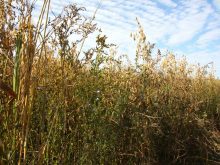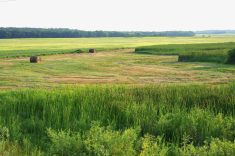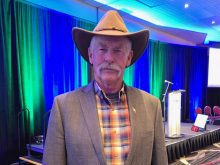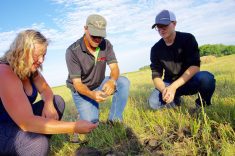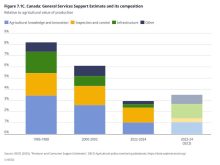[Updated: Jan. 10, 2025] A Manitoba farmer has become the first in the province to get certified under a new regenerative agriculture assessment program.
Andreas Boersch, president of Abtshof Farms Ltd., received his “Regenified” verification status on Oct. 2.
Why it matters: Regenerative farmers have been looking for ways to capture premiums, not just cost savings, from their farming practices. Certification programs like Regenified are one tool being pitched.
Read Also

Seeding Indigenous agricultural prosperity
National Circle for Indigenous Agriculture and Food says Indigenous agricultural success needs strong relationships.
Boersch’s farm near the central Manitoba community of Elie, west of Winnipeg, spans roughly 5,000 acres, 1,200 of which are organic. He’s been employing regenerative agriculture processes since 2017.
“It’s a grain farm, but we do a very diverse rotation,” he said.
In addition to traditional crops like wheat, oats, canola and soybeans, Boersch integrates intercropping and cover cropping, which are promoted to achieve biodiversity and soil health gains with reduced inputs. He also employs controlled traffic farming, a system that limits machinery to specific tracks to reduce soil compaction.
Confirmed regenerative
Regenifed was conceived by the same people behind regenerative agricultural consulting group Understanding Ag. Well-known champions of the regenerative movement include Gabe Brown, Allen Williams and Doug Peterson, most of whom have spoken at local grazing, range management and regenerative events and industry meetings.
These regenerative advocates hope to establish a unifying standard in the movement.
Regenerative agriculture faced a problem compared to other industries and production systems that had successfully implemented a certification process. Sectors like organics were able to devise a set of parameters and lists of accepted practices.
That wouldn’t be effective for regenerative agriculture. The movement has purposely been more flexible, oriented around goals that had more to do with outcomes than the exact recipe for practices used to reach them. Diversity among farms requires that flexibility.
“Row crop production in British Columbia is very different than row crop production in southern Saskatchewan. There are different climates, different contexts, different soil types, different weather patterns and different frost seasons,” said Salar Shemirani, co-founder and CEO of Regenified. “For regenerative practices, one size doesn’t fit all.”
Regenified developers came up with a five-tiered system that their agronomists could use to assess farms.
At tier 1, a farm has taken steps to implement regenerative practices, but on less than 20 per cent of the land base. Tier 2 farms are farming regeneratively on 20-40 per cent of the operation; tier 3 farms have implemented those systems on 40-60 per cent of their land; tier 4 would be 60-80 per cent, and farms at the fifth and final tier have adopted regenerative farming on 80-100 per cent of their land.
Those same agronomists measure metrics such as soil aggregate stability, water infiltration rates, soil biology and livestock health.
The goal is for a farm to move up through the tiers. Regenified will return to the farm each year to reassess. If a farm doesn’t move up within three years, it will lose its certification status.
Abtshof Farms was assessed at tier 3.
“We are compliant to a certain degree, but they want us to improve and get to a higher tier,” said Boersch.
At tier 2 or above, farmers can market product through Regenified.
Getting the green light
Boersch said the process was intensive, but not daunting. Agronomists from Regenified assessed his farm for approximately two weeks, doing soil tests, measuring soil coverage and asking questions about his regenerative practices.
Boersch said he ultimately hopes the effort he put into this certification will allow him to charge a premium on what he produces.
“We’re in the early stages of it, so we won’t necessarily reap big benefits from it right away, but it’s like the chicken and the egg,” he said.
“But if nobody can define (regenerative) properly, how can (potential buyers) know that it’s true? This is the first attempt to connect the two.”
As someone with a foot in both the organic and regenerative parts of agriculture, Boersch said the regenerative process was much easier compared to the strict and what he said are sometimes unreasonable rules tied to organic farming.
“The founders of Regenified are farmers, so it’s not putting us in a straight jacket, like organic,” he said. “That’s what I like about Regenified.”
*Update: A past version of this article mistakenly said that farmers can start selling product at tier 1 of the program.




